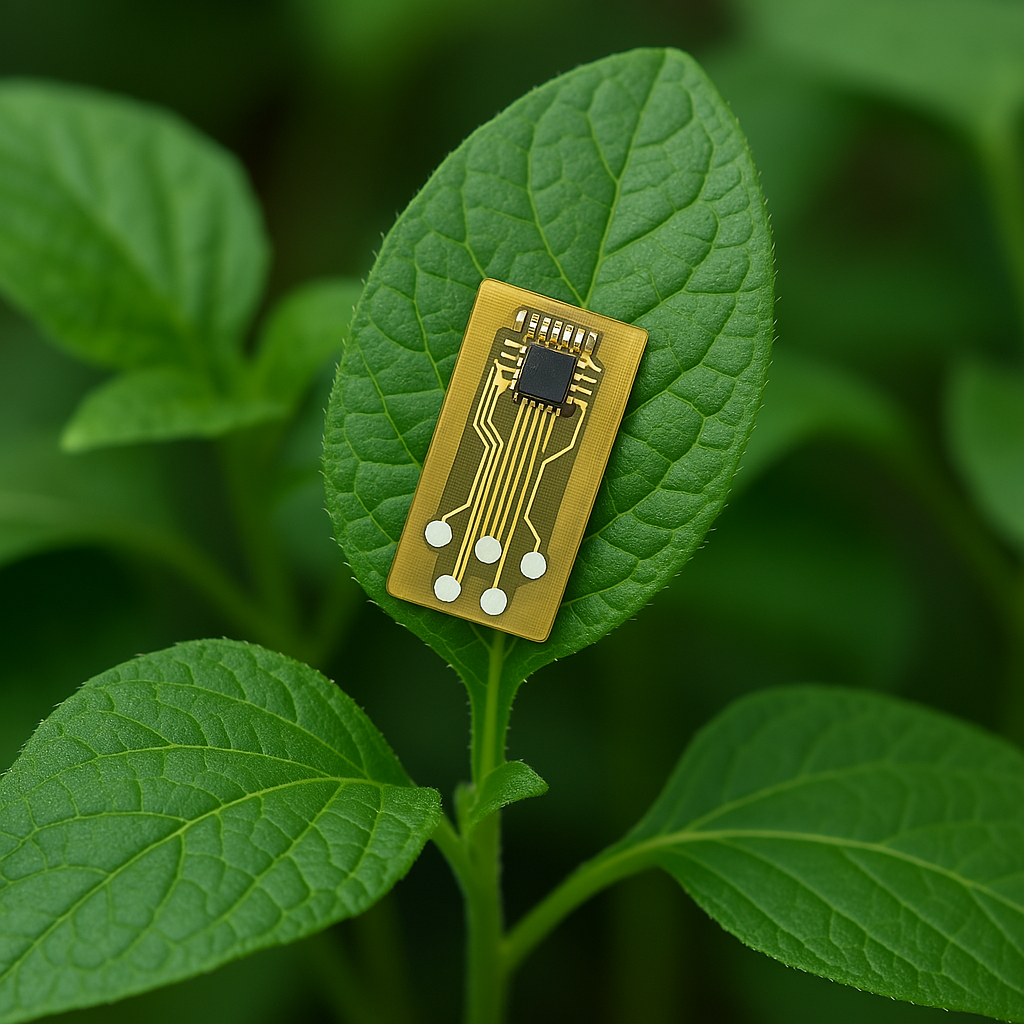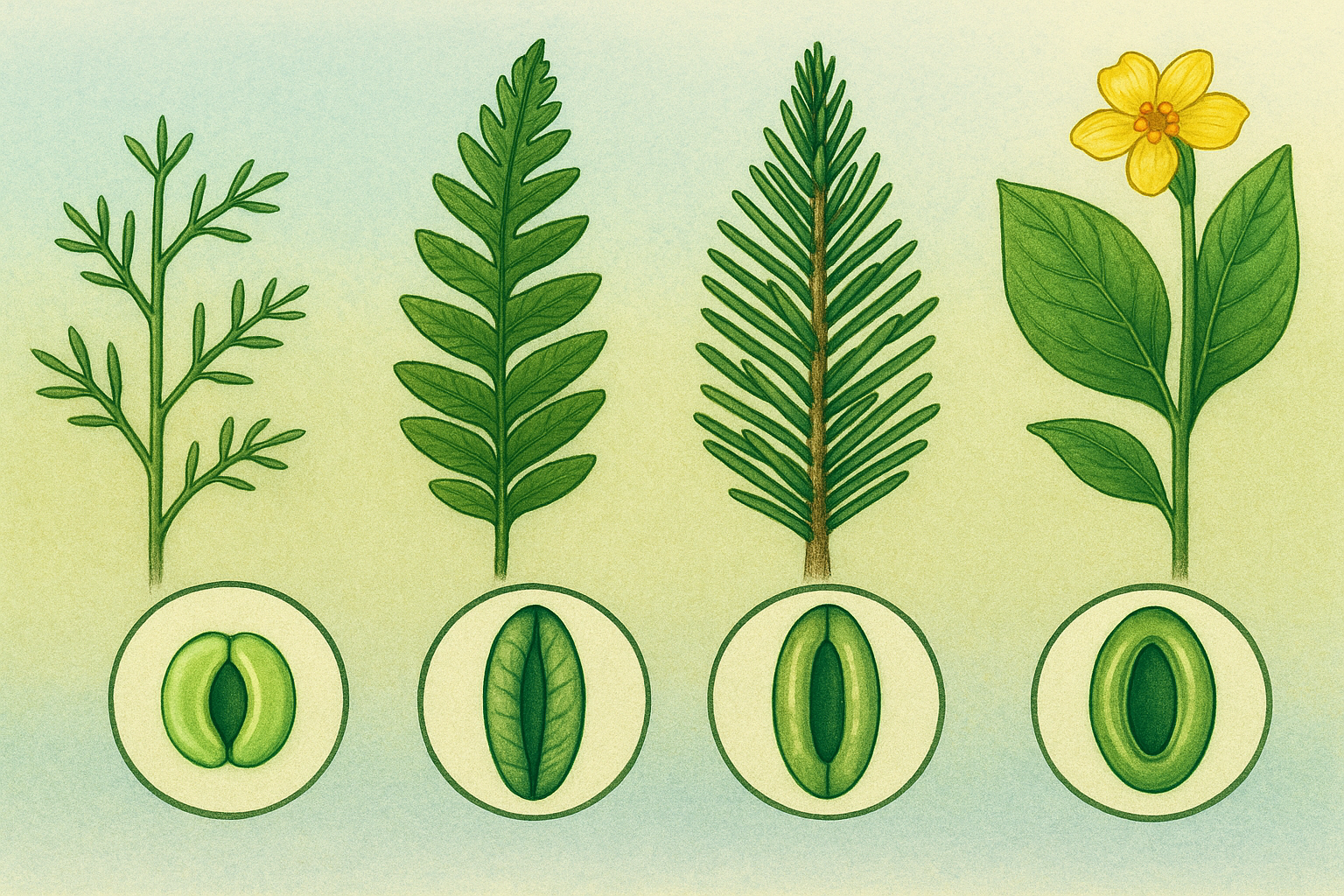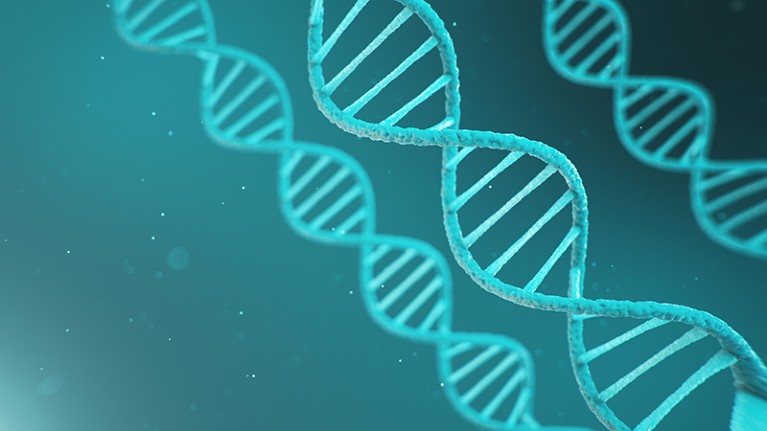In an era defined by innovation and data-driven solutions, the integration of technology into everyday life is no longer limited to human needs. From smartwatches that track heart rates to wearable glucose monitors for health management, technology has proven its transformative power. Now, that same concept is branching out—quite literally—into the plant world. Wearable technology, once the exclusive domain of human health and fitness, is being adapted to suit the needs of agriculture and environmental science. The emergence of wearable sensors for plants marks a major step forward in the way we monitor, understand, and support plant growth and health.
As the world faces challenges such as climate change, soil degradation, water scarcity, and food insecurity, the pressure to optimize agricultural productivity while minimizing environmental impact has never been higher. Precision agriculture and smart farming solutions have already started to revolutionize how crops are managed, but wearable tech for plants takes this a step further by offering real-time, direct insight into a plant’s physiological condition. These sensors are not just game-changers—they are potentially life-savers in the race to sustainably feed a growing global population.
What is Wearable Tech for Plants?
Wearable tech for plants refers to miniaturized, lightweight devices that can be attached directly to plants—usually on leaves, stems, or roots—to collect and transmit physiological and environmental data. These tools allow researchers, farmers, and even home gardeners to gather continuous, real-time data about a plant’s internal processes and its surrounding conditions. Unlike traditional sensors that may sit in the soil or ambient air, plant wearables offer a more intimate connection to the plant itself, often measuring variables at the tissue level.
These devices come in various forms. Some are as thin as a sticker, flexible enough to move with the plant, while others are engineered like microelectronic circuits placed strategically on plant surfaces. They’re designed to be non-invasive or biodegradable, ensuring that the sensor does not disrupt the plant’s natural growth processes. The materials used are typically soft, stretchable, and resilient, allowing for long-term attachment without causing damage.
Some models are passive data collectors, recording information for later retrieval, while others are equipped with wireless communication modules that transmit data to smartphones, computers, or cloud-based dashboards in real time. The rise of wireless connectivity, Bluetooth, and low-power IoT (Internet of Things) protocols has significantly contributed to the practicality and scalability of these plant monitoring systems.
How Do These Sensors Work?
Wearable plant sensors function by measuring key indicators of plant health and environmental interaction. These include metrics such as transpiration rate, leaf moisture content, photosynthetic activity, electrical signals, temperature, and even stress markers. For instance, sensors might monitor how much water is being lost through the leaves, which can help indicate drought stress or overwatering. Others track chlorophyll fluorescence to gauge photosynthetic efficiency—a strong indicator of overall plant vitality.
Some of the more advanced technologies utilize electrochemical sensing, where chemical reactions are measured in the plant tissue or on the leaf surface. These readings can reveal nutrient uptake levels or identify specific ion imbalances, such as nitrogen or potassium deficiencies. Other sensors rely on microelectromechanical systems (MEMS), tiny mechanical sensors integrated with electronics that can detect motion, vibration, or structural changes in the plant.
Bioelectrical signaling is another fascinating area of research. Plants, like humans, use electrical signals to respond to external stimuli. Wearable sensors can detect these signals, providing insight into how a plant perceives and reacts to changes in its environment. For example, when a plant is damaged by pests or mechanical injury, it may send electrical signals that resemble a primitive warning system. Capturing and interpreting these signals can offer a completely new method of early disease and stress detection.
The Benefits of Wearable Sensors in Agriculture
One of the primary benefits of wearable plant sensors is their ability to detect issues before they become visible or symptomatic. Traditional signs of stress—such as wilting, yellowing, or stunted growth—often appear only after the damage is done. Wearable tech allows for proactive intervention by identifying stress markers at a biochemical or molecular level. This early warning system is crucial for farmers who need to act quickly to preserve crop health and productivity.
Furthermore, the granular data collected by these devices can inform more precise agricultural practices. Rather than applying fertilizers or irrigation uniformly across a field, growers can tailor treatments to the specific needs of individual plants or zones. This precision not only saves resources but also reduces environmental runoff, pesticide overuse, and soil degradation.
Another major advantage is sustainability. As global agriculture seeks to reduce its carbon footprint, wearable sensors can help optimize input efficiency and reduce waste. They can also assist in monitoring the effectiveness of organic or regenerative farming techniques by providing scientific validation of their impact on plant health.
For researchers, plant wearables provide an unprecedented window into plant biology. Real-time, long-term monitoring enables the study of plant responses to environmental stressors, climate change, or genetic modification. This knowledge can then be used to develop new crop varieties that are more resilient, productive, or nutrient-dense.
Applications Across Multiple Sectors
Although the most obvious applications of wearable plant technology lie in agriculture, its potential reaches far beyond. In indoor farming and greenhouse operations, where environmental control is already advanced, wearable sensors offer a new layer of fine-tuned precision. These systems can be integrated with automated irrigation, lighting, and climate control setups to create a fully responsive growing environment.
In forestry and conservation, wearable sensors can monitor the health of endangered or ecologically important species, especially in areas that are remote or sensitive. By tracking how trees and plants respond to drought, disease, or pollution, ecologists can make more informed decisions about land use and restoration projects.
Urban farming and home gardening are also seeing a wave of smart plant tech. With the rise of app-connected home gardens, people can now receive push notifications about their plant’s needs—water, sunlight, nutrients—based on real-time data collected by wearable or embedded sensors. This kind of engagement not only enhances plant care but also encourages more people to grow their own food and engage with the environment in a meaningful way.
Challenges and the Road Ahead
As promising as wearable tech for plants is, there are still challenges to overcome. One of the biggest is cost. While prices are gradually coming down, many of the more sophisticated sensors remain too expensive for small-scale farmers or hobbyists. Durability is another concern, especially for sensors used outdoors where weather, pests, and mechanical damage are constant threats.
Power supply and energy efficiency are also critical factors. Many wearable sensors rely on small batteries or solar cells, which need to be long-lasting and reliable to support continuous monitoring. Advances in energy harvesting and low-power electronics are helping to address this issue, making devices more autonomous and maintenance-free.
Data interpretation is another hurdle. While collecting data is now easier than ever, interpreting that data correctly—and translating it into actionable insights—remains a complex task. As artificial intelligence and machine learning tools improve, these systems are expected to become more intuitive and user-friendly, offering automated suggestions and even predictive analytics based on trends and patterns.
Conclusion: Bridging Nature and Technology
The emergence of wearable technology for plants signals a remarkable shift in how we interact with the natural world. By turning plants into active participants in their own care, these sensors offer a more responsive, intelligent, and sustainable approach to agriculture and environmental stewardship. As technology continues to evolve, we can expect plant wearables to become more accessible, more powerful, and more deeply integrated into both commercial farming and everyday life.
Imagine a future where every plant in a greenhouse, vertical farm, or backyard garden has a voice—a way to communicate its needs and status directly to us through data. With the integration of sensors, AI, and automation, this vision is quickly becoming reality. Wearable tech for plants is not just about growing better crops; it’s about growing a better relationship with the living systems that sustain us.
In this quiet but revolutionary transformation, where biology meets technology, we are finally learning to listen to the language of plants—and it’s a conversation that could change the world.
References
1. Zhang, Y., Zhang, L., & Cui, Y. (2021). Wearable Plant Sensors for Real-Time Monitoring of Plant Physiology. Nature Electronics, 4(12), 882–890. https://doi.org/10.1038/s41928-021-00679-6
2. Kim, J., Campbell, A. S., de Ávila, B. E.-F., & Wang, J. (2019). Wearable Biosensors for Plants: A New Frontier in Smart Agriculture. Advanced Materials, 31(36), 1807039. https://doi.org/10.1002/adma.201807039
3. MIT News. (2023). Tiny Plant-Wearable Sensors Could Help Farmers Grow More Food with Less Water. Retrieved from https://news.mit.edu
4. USDA National Institute of Food and Agriculture (NIFA). (2022). Smart Farming and Precision Agriculture. Retrieved from https://nifa.usda.gov
5. The Verge. (2020). Scientists Develop Smart Wearables for Plants. Retrieved from https://www.theverge.com
6. IEEE Spectrum. (2022). The Growing Field of Plant Wearables. Retrieved from https://spectrum.ieee.org/plant-wearables










